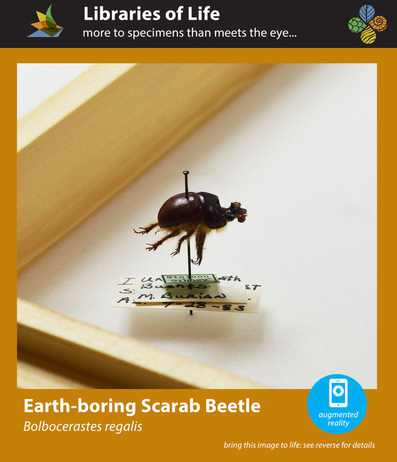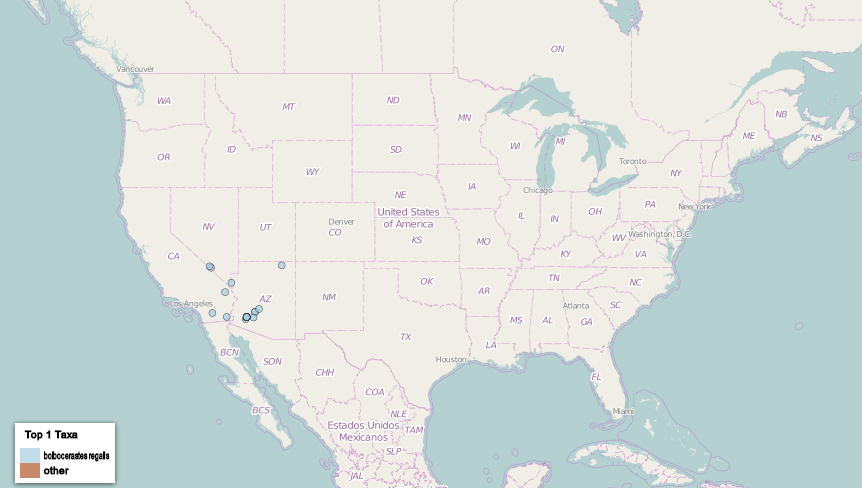earth-boring scarab beetle: Did you know?
|
Little is known about the habits of Bolbocerastes regalis, other than it digs vertical burrows in sandy desert areas in southwestern North America and is mostly active in the late winter and spring. The burrows can be distinguished from most other insect burrows by the characteristically "ropy" push-up mounds, which look like a small pile of broken cylinders made by pushing wet sand through a dime-sized opening and . Burrows containing beetles are usually plugged near their entrance, while empty burrows often have an open center hole.
The molar (grinding) surface of their mandibles (mouthparts) is smooth rather than rough as found in plant-eating beetles, so it is thought that the adults may eat underground mushrooms. In related genera, adults dig deep burrows and supply them with surface leaf litter on which the larvae develop, and that is probably true for this species as well. Adults are sexually dimorphic (meaning sexes look different): the males have a narrower central "horn" well in front of the eyes, and the females have a broader "shelf" that sticks up between the eyes. Localized species such as the earth-boring scarab beetle are precisely the unique fauna targeted by the Symbiota Collections of Arthropods Network (SCAN), a data network which seeks to digitally connect arthropod collections from southwestern North America. SCAN’s mission is to integrate databases and better capture specimen data, which can then be used for ecological and evolutionary monitoring and modeling. Credits: Project's Library of Life Leads: Neil Cobb and Nico Franz 3-D Imager: K. Harrison Holmes/Anne Basham More information: Symbiota Collections of Arthropods Network http://symbiota4.acis.ufl.edu/scan/portal/index.php Digitized Bolbocerastes regalis specimens in biological collections.
Click the map to explore the iDigBio database. |



